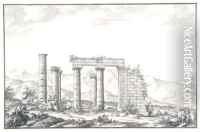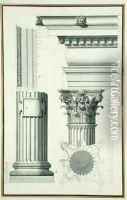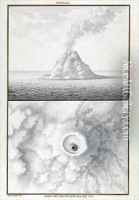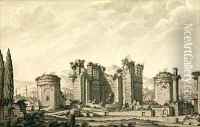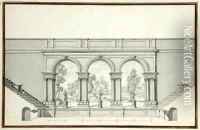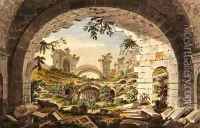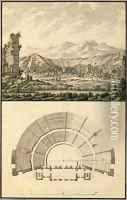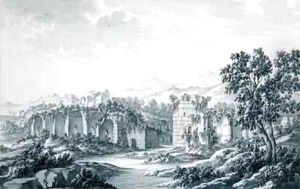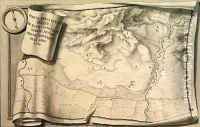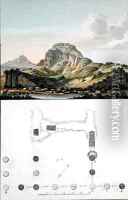Giovanni Battista (Giambattista) Borra Paintings
Giovanni Battista (also known as Giambattista) Borra was an Italian architect, engineer, and draughtsman of the 18th century, born in 1701 in Dogliani, Piedmont. He is particularly noted for his work in the Baroque style and for his contributions to the field of archaeological illustration.
Borra received his education in Turin, and early in his career, he became associated with prominent figures such as Filippo Juvarra, an influential architect of the time. Under the tutelage of Juvarra, Borra developed his architectural skills and honed his distinctive style, which combined classical elements with contemporary Baroque aesthetics.
In 1734, Giambattista Borra embarked on a significant journey to the eastern Mediterranean with the British antiquary Robert Wood. This expedition was pivotal for Borra's career as he meticulously documented ancient ruins in places like Palmyra and Baalbek. His drawings from this trip were later published and became a valuable resource for scholars and artists interested in the architecture of antiquity. The publication, titled 'The Ruins of Palmyra, otherwise Tedmor, in the Desart' in 1753, and 'The Ruins of Balbec' in 1757, significantly impacted the neoclassical movement in architecture and design.
Borra's architectural works include the design and construction of several notable buildings in his native Piedmont. Among his most significant projects were the Royal Palace of Venaria Reale and the Palazzo Mazzetti in Asti. Borra's designs often featured grand facades, intricate ornamentation, and harmonious proportions, reflecting the grandeur and elegance of the Baroque era.
Throughout his life, Borra also engaged in engineering projects, such as the design of complex hydraulic systems and urban planning schemes. His expertise was sought after by the ruling elites of his time, who commissioned him to create sophisticated residences and public works.
In 1770, Giambattista Borra passed away, leaving behind a legacy of artistic and architectural works that continue to be studied and admired. His influence extends beyond his lifetime, as his illustrations and architectural principles have inspired generations of architects and artists around the world.
